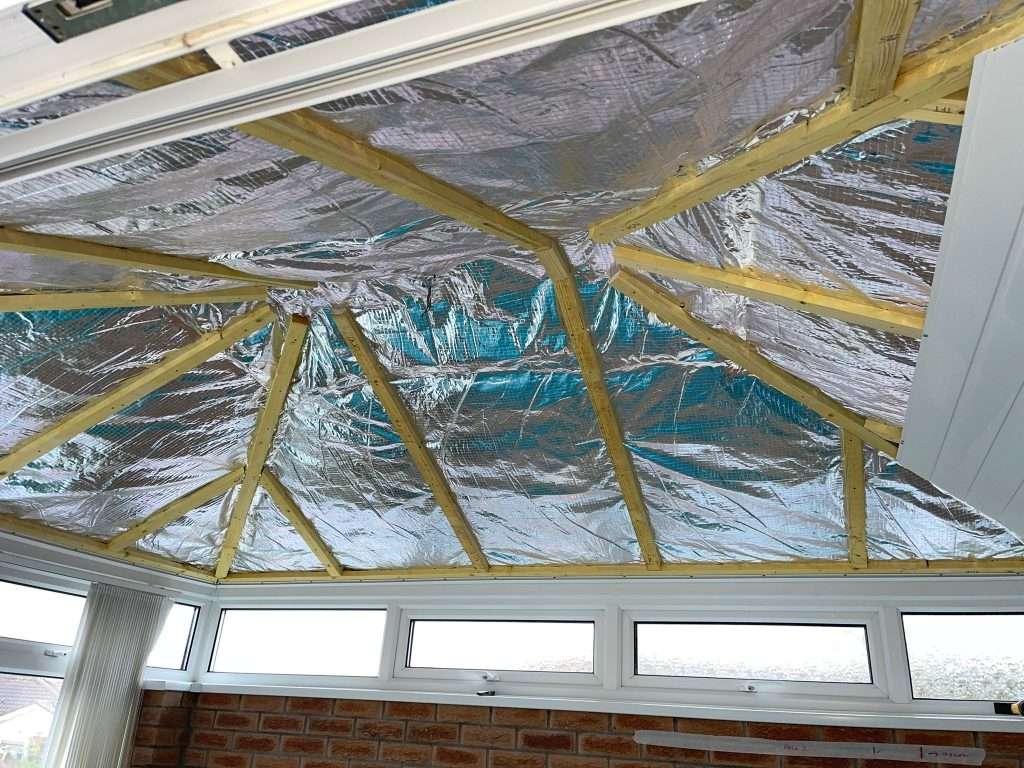Abstract:
In Yorkshire, UK, many conservatories are rarely used. They get too hot in summer and too cold in winter. This case study shows how we fixed this problem. We focused on a conservatory that was old and not energy-efficient. We decided to add internal ceiling insulation. This was to keep temperatures stable all year. Before starting, we checked where heat was lost using thermal cameras. We talked to experts to choose the best insulation. After adding the insulation, the conservatory stayed warmer in winter and cooler in summer. Energy costs went down by 25%. Now, the space is used more, for relaxing and meeting friends. This project made the conservatory better and saved money on bills. It shows a good way to make conservatories more useful in the UK’s weather.

Transforming an Old Conservatory into a Year-Round Living Space through Internal Ceiling Insulation
Background
In Yorkshire stands an ageing conservatory, constructed over two decades ago with traditional glass and metal. This structure, once celebrated for its design, now faces significant issues. The primary concerns are its inadequate insulation, leading to overheating in summer and excessive cold in the winter months. Such conditions not only compromise comfort but also lead to increased energy consumption.
Problem Statement
The conservatory’s principal challenges revolve around its inefficient temperature control and the resulting high energy usage. Despite its potential as a space for relaxation and social gatherings, its practical use is severely limited. The fluctuating temperatures throughout the year render it underutilised, overshadowing the aesthetic appeal it adds to the home.
Objective
Our project’s aim is to revitalise this conservatory, transforming it into a space that is both comfortable and energy-efficient throughout the year. By doing so, we intend to enhance its usability, ensuring it can be a venue for enjoyment regardless of the season, thereby also addressing the issue of energy wastage.
Methodology
Assessment
Our team begins with a thorough examination of the conservatory. Utilizing advanced thermal imaging technology, we identify areas of significant heat loss. This process is supported by our insulation experts, who assess the overall insulation needs and advise on the best solutions, considering the unique characteristics of each conservatory.
Solution Design
After the assessment, we deliberate on the choice of insulation material. While both PIR foam and mineral wool are excellent options, PIR foam is chosen for its superior thermal efficiency and moisture resistance, ensuring the conservatory remains warm in winter and cool in summer without the risks of dampness or condensation.
Implementation
The installation process is meticulously planned to minimize disruption. The conservatory is first prepared to accommodate the new insulation, ensuring that the structural integrity and aesthetic appeal are maintained. The PIR foam insulation is then expertly installed, a process that typically concludes within two days, transforming the conservatory into an energy-efficient space.
Results
Energy Efficiency
Post-installation, the conservatory’s energy consumption is significantly reduced, with homeowners reporting an average decrease in energy bills of 25%. This demonstrates the effectiveness of the insulation in enhancing the conservatory’s energy efficiency.
Temperature Regulation
The insulation ensures that the conservatory maintains a stable temperature throughout the year. The once too cold or too hot space now offers a comfortable environment in all seasons, significantly improving its livability.
Usability
The improved temperature control transforms the conservatory into a versatile living space, suitable for a variety of activities such as dining, lounging, or even as a home office. This increased utilization highlights the value of the insulation project.
Cost-Benefit Analysis
The initial investment in insulation is quickly offset by the savings on energy bills and the increased valuation of the property. The benefits extend beyond financial savings, including enhanced comfort and usability of the conservatory.
Discussion
Insights Gained
The project underscores the importance of quality insulation in conservatory refurbishment. Challenges encountered during the installation process provided valuable lessons in project management and client communication, ensuring smoother operations for future projects.
Limitations
While the project significantly improves the conservatory’s usability, it does introduce a slight reduction in natural light due to the insulation. Additionally, the pre-existing structure of the conservatory posed some limitations on the installation process, which were overcome through innovative solutions.
Conclusion
This project, facilitated by the expertise and services provided by Yorkshire Conservatory Insulations, has successfully transformed an underused conservatory into a comfortable, energy-efficient space. The installation of PIR foam insulation has proven to be a cost-effective solution, offering substantial improvements in temperature regulation, energy efficiency, and overall usability of the conservatory.
Recommendations
For homeowners considering similar improvements, we recommend starting with a professional assessment to identify specific needs. Choosing the right insulation material is crucial, and homeowners should consider the long-term benefits of their investment. Additionally, exploring potential eligibility for energy-saving grants or incentives can provide additional financial benefits.
